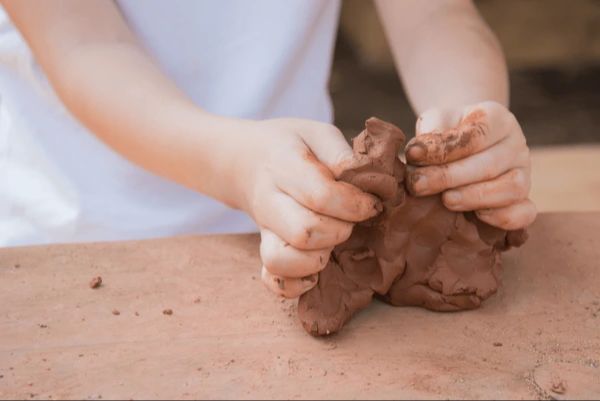Which Colours Are Best For Pot Painting?
Pot painting is a popular craft that involves decorating ceramic pots, vases, and other vessels with colorful designs. Choosing the right colors is an important part of the pot painting process, as color can greatly impact the overall look and feel of the finished piece. The color choices also allow the artist to express their creativity and convey certain moods or themes.
When painting pots, the color palette can range from vibrant primaries to muted earth tones. Bright, saturated hues tend to create an energetic, lively look. Softer pastel shades evoke a more soothing, delicate aesthetic. Darker, richer colors like navy blue and forest green can make a dramatic statement. Neutral creams and browns have an understated, natural elegance.
Beyond just aesthetics, color also carries symbolic meaning. Red conveys love and excitement, while blue can represent tranquility or sadness. Yellow is cheerful and optimistic. Green can signify growth, health, or renewal. So color choice allows the pot painter to reinforce themes and emotions through color symbolism.
Overall, thoughtful color selection is key in pot painting. The hues, tones, and combinations impact the look, feel, and meaning of the finished piece. This guide will explore the best color options for creating stunning painted pots.
Primary Colors
The primary colors in pottery painting are red, blue, and yellow. These colors are considered primary because they cannot be created by mixing other colors together. Instead, all other colors are derived from some combination of red, blue, and yellow.
Red, blue, and yellow are ideal primary colors for pottery painting for a few key reasons:
- They are bold, vibrant colors that stand out well on pottery.
- They mix cleanly together to create a wide range of secondary and tertiary colors.
- They cover pottery surfaces evenly and opaque.
When starting any pottery painting project, it’s recommended to begin with having red, blue and yellow paints on hand. These will allow you to mix and create any other color needed. Many pottery painting studios provide these three primary colors as a standard part of their starter paint sets for this reason.

While other paint colors are useful for shading and accenting, red, blue and yellow form the foundation of any pottery painting palette. Mastering the use of these primary colors is key for any beginning potter painter.
Source: https://ancientpottery.how/pottery-paint-colors/
Secondary Colors
Secondary colors are created by mixing two primary colors. The three secondary colors are green, orange, and purple.
Green is made by mixing blue and yellow. It’s a cool, calming color that can symbolize nature, growth, and renewal. Green is a popular color for pottery as it complements many colors and glazes.
Orange is made by mixing red and yellow. It’s a warm, energetic color that represents creativity, happiness, and enthusiasm. Orange makes a bold, vibrant statement in pottery.
Purple is made by mixing blue and red. It’s a regal color associated with luxury, spirituality, and imagination. Adding purple accents to pottery can create an elegant, mystical look. Vibrant purple glazes are especially striking.
When painting ceramics, having a palette with strong green, orange, and purple enables mixing a wide range of hues. Darkening a secondary color with black creates a rich shade. Lightening with white produces a soft pastel. Combining secondary colors allows blending tertiary hues.
References:
https://ceramicartsnetwork.org/freebies/guide/how-to-add-color-to-your-ceramic-art
https://www.lakesidepottery.com/Pages/Pottery-tips/painting-coloring-repaired-ceramic-sculpture-tutorial.htm
Tertiary Colors
Tertiary colors are made by mixing a primary color with a secondary color adjacent to it on the color wheel. For example, red and orange make red-orange. Tertiary colors are more subtle and sophisticated color combinations. Using tertiary colors in pottery can create a visually rich, complex palette. Some examples of tertiary colors used in pottery include olive green, russet, citron, and slate.
According to the article “Contextualizing Ceramic Color” on the Ceramic Arts Network, mixing a primary and secondary color creates vibrant tertiary colors with nuanced hues. The article says “tertiary colors vibrate visually and bring energy to functional pottery and sculptural works.” Tertiary colors expand the color options for pottery and enable more unique color combinations.
When selecting tertiary colors for pottery, it’s helpful to refer to a color wheel to visualize how primary and secondary colors mix. Adjacent pairs like red-orange, yellow-green, blue-violet, and red-violet make visually harmonious tertiary colors. Using multiple tertiary colors together can create depth and interest.
Warm vs Cool Colors
When it comes to choosing colors for pot painting, one of the most important considerations is whether a color is warm or cool. Warm colors tend to evoke feelings of energy, joy, and warmth, while cool colors are more calming, peaceful, and reserved. Colour Theory Made Easy
On the color wheel, warm colors are on one side, ranging from reds to yellows. They include shades like red, orange, and yellow. Cool colors are on the opposite side, ranging from greens to purples and include shades like blue, green, and purple. Contextualizing Ceramic Color
When selecting colors for pot painting, warm colors tend to create excitement and grab attention quickly. They bring forward elements and make items seem closer visually. Cool colors have a calming effect and can seem farther away visually. Using a balance of warm and cool colors together can create visual interest.
Color Meanings
Colors often evoke powerful meanings and associations for people. Here are some typical associations with common colors used in pottery painting:
Red is associated with passion, excitement, energy, and action. It can represent love, warmth, and comfort. In some cultures it signifies luck or success.
Blue is often seen as calm, peaceful, wise, and stable. It is associated with intelligence, trust, loyalty, and truth. Dark shades of blue can symbolize professionalism and authority.
Yellow is cheerful, playful, optimistic, and youthful. It represents joy, happiness, positivity, and fun. In some cultures it can mean courage.
Green evokes nature, health, tranquility, renewal, and harmony. It can represent luck, fertility, and the environment. Dark green is also associated with prestige and wealth.
Purple embodies luxury, creativity, and magic. It is often seen as mysterious, spiritual, and imaginative. Lighter shades represent spring and femininity.
Orange is energetic, enthusiastic, vibrant, and sociable. It represents adventure, confidence, and warmth. In some cultures it is symbolic of strength and endurance.
Neutral tones like black, white, grey, and brown project solidity, security, simplicity, and elegance. Black specifically can mean mystery, power, and sophistication.
Color Trends
When it comes to pottery painting, current color trends tend to reflect what’s popular in home decor and fashion. Looking at forecasts for 2022, earthy neutrals like beige, brown, and tan are still going strong (2022 Colour Trends). These natural hues provide a soothing, grounded feel. However, bolder colors are also making a statement, like jewel tones, deep greens, and rich blues. Vibrant orange and yellow shades add energy, while soft pastels lend a delicate touch.
Some of the most popular pottery painting colors right now include Gloucester Sage, a muted green; Natural Linen, a warm beige; and Hint of Violet, a pale purple. Ceramic pieces in these hues complement farmhouse, boho, and modern decor alike. Overall, the trend is toward colors inspired by nature that are soft and inviting. Bright, saturated colors can be used as accents.
Color Schemes
When choosing colors for pottery painting, it’s important to consider color schemes. Using colors that complement each other can create a cohesive and visually appealing look.
Some common color schemes used in pottery painting include:
- Monochromatic – Using shades, tones and tints of one color. This creates a simple, minimalist look.1
- Complementary – Using colors opposite each other on the color wheel, like red and green or blue and orange. This creates high contrast.1
- Analogous – Using colors next to each other on the color wheel, like blue, purple and red. This creates harmony.1
Consider the color scheme you want to achieve when selecting paint colors. Monochromatic is simple yet elegant, complementary creates vibrancy, and analogous provides balance. Choose colors strategically for the look you desire.
Best Practices
When painting ceramics, following best practices will help ensure a professional looking final product. Proper prep work, brush techniques, and sealing are key areas to focus on.
Prep work involves cleaning the ceramic piece thoroughly to remove any dirt or oils. Lightly sanding glossy surfaces will help the paint adhere better. Using painter’s tape to mask off areas you don’t want painted is also recommended.
For brush techniques, load just enough paint on your brush and avoid overloading it. Use smooth brush strokes and avoid going over the same area multiple times. Let each coat dry thoroughly before adding another. When adding multiple colors next to each other, let the paint overlap slightly to blend the edges.
After painting is complete, it’s important to properly seal the ceramic piece. Clear acrylic spray paint works well for sealing as it fully cures and provides a protective coat. Multiple thin coats are better than one thick coat. Allow each coat to fully dry before adding the next. Once sealed, the ceramic piece will be protected from chipping and wear.
Following prep work, brush technique and sealing best practices will result in a ceramic painting that looks professionally done and lasts for years to come.
Conclusion
In summary, when choosing colors for pot painting, consider the following key points:
Primary colors (red, blue, yellow) are vibrant and eye-catching. Secondary colors (orange, green, purple) are soothing and sophisticated. Tertiary colors are more complex and create dimension.
Warm colors (reds, oranges, yellows) energize and stand out, while cool colors (blues, greens, purples) are calming and recede. Use both for visual interest.
Color meanings and associations evoke different moods and emotions. Reds suggest excitement, blues trust, greens nature. Consider the impression you want to make.
On-trend colors capture attention, but risk looking dated later. Classic versatile hues have long-lasting appeal.
Monochromatic, complementary, triadic and analogous schemes create unified, harmonious palettes. Accent colors can make focal points pop.
Best practices include limiting your palette, using colors purposefully, and testing samples before committing. Planning ahead ensures your color choices have the desired effect.
With some thoughtfulness about color theory and psychology, you can pick the perfect colors to make your pottery pop!




